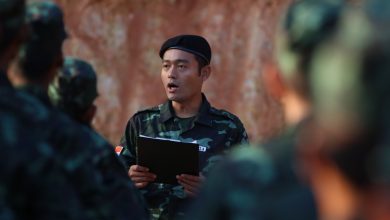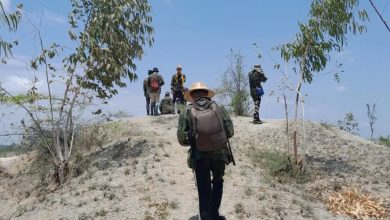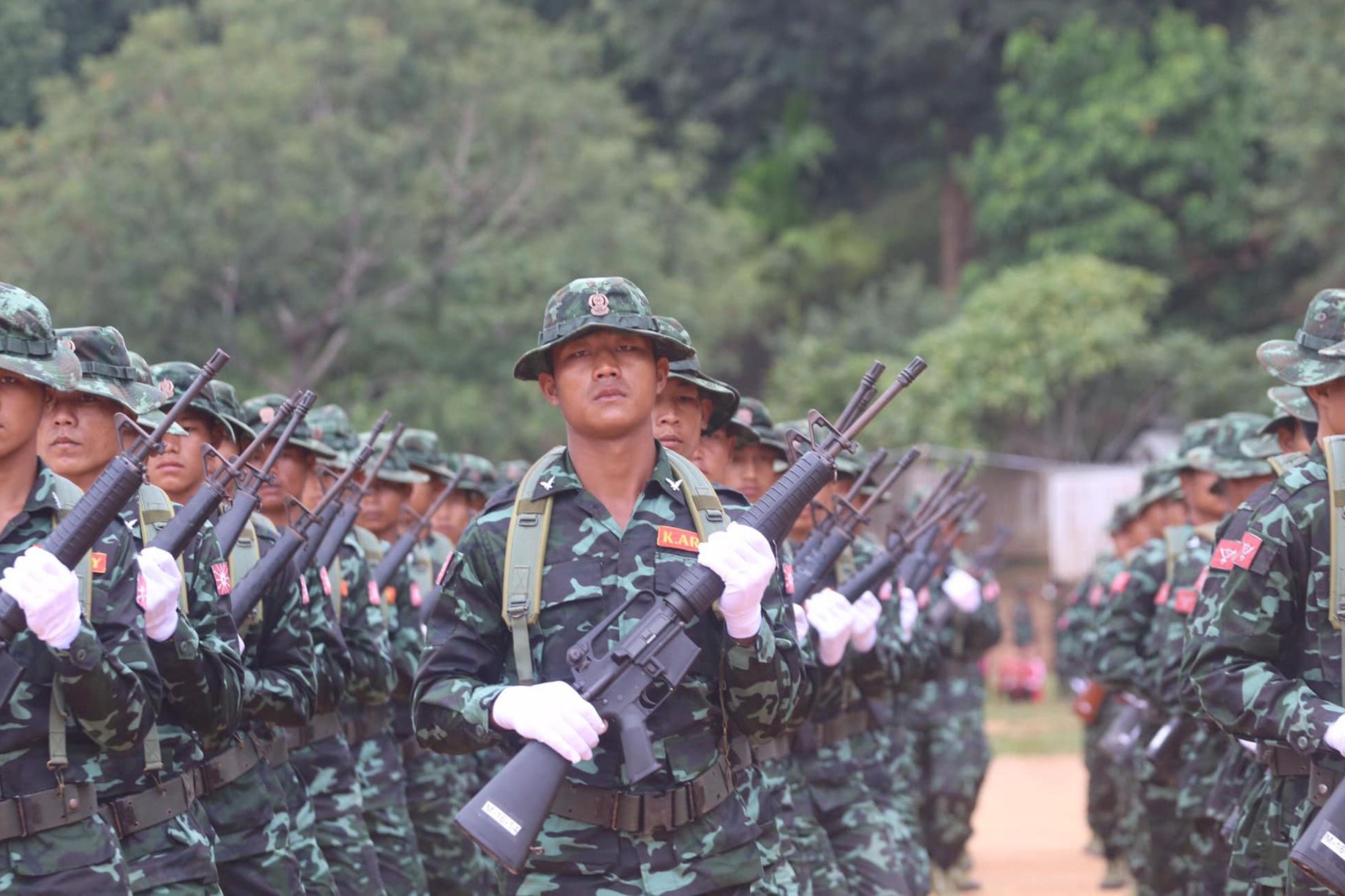
Yesagyo, situated on the western shores of the Chindwin River in Magway Region, has become a strategically important township for both resistance forces and the Myanmar military since the 2021 coup.
With access to both the Ayeyarwady River and nearby Mandalay and Sagaing regions, the coup regime has stationed three infantry battalions (IBs) in Yesagyo in an attempt to keep it under their control.
Despite being outgunned by the Myanmar army, a coalition of allied anti-junta defence forces in the township have repeatedly attacked and destroyed police stations and military checkpoints, but also established administrative and educational programming in rural Yesagyo in collaboration with the elected National Unity Government (NUG).
Myanmar Now recently spoke with Wai Gyi, a pseudonym used by the leader of the Yesagyo Township People’s Defence Force (PDF), about his armed force’s activities in the township and the challenges they have encountered over the past year-and-a-half.
Myanmar Now: To what extent does the military have a presence in Yesagyo?
Wai Gyi: Yesagyo Township is a very geographically and strategically important area for the military as it is home to the confluence of the Chindwin and Ayeyarwady rivers. It is also the only place in Magway Region that is connected to Sagaing and Mandalay regions. IBs 256, 257 and 28 are also based in Yesagyo. One might think it would be difficult for revolutionary forces to operate in the township because there are three junta bases there, but we have become much stronger and more united.
Many areas are already under the control of the resistance forces, and the military is only able to control the urban townships located near their bases. The military is also running schools in towns, but they can’t open a single school in the rural areas. They can’t operate their administrative mechanisms there, either.

We haven’t directly faced one of the junta assault columns in the township yet but the military is stationed in Min village, around the rivers’ confluence. Military units from Myaing, Chaung-U and Salingyi townships in Magway and Sagaing have also come as reinforcements during attacks on the junta’s forces in Yesagyo.
Can you describe the operations of the Yesagyo PDF in the township?
The 14th batch of participants in our basic combat training just graduated successfully. We have trained nearly 1,500 people in total. We are also forming village- and ward-level defence teams. We are currently focused on fighting against the junta as a township-level organisation.
We have won a number of battles against the junta not only in Yesagyo, but also in other townships like Myaing, Pauk and Salingyi. In Yesagyo, we managed to seize control of the Pa Khan Nge base and the Ma Eu police station and bridge outpost. We confiscated weapons from the Lin Ka Taw police station on Yesagyo’s border with Myaing without suffering any casualties. These achievements were possible only with public support.

What have you achieved since your PDF chapter’s formation more than one year ago?
We still lack the power needed to attack the three IBs in the township, but these forces can’t attack us either because we have planted explosives and deployed guards and scouts throughout our territories, and maintain total control over these areas. Another strength of ours is that we have formed meaningful relationships with the PDFs in neighbouring townships like Myaing and Salingyi—we help each other during battles.
There are some villages where the majority of the residents are military supporters, and those are the villages where the [military-backed] Pyu Saw Htee militia members are concentrated. But they do not dare to leave their villages anymore, because of us.
What challenges remain?
We have village and ward defence forces and people’s administration teams. We deal with matters regarding crime, education, healthcare and social issues. We have had to deal with judicial matters in our territory as well. People report to our teams about all sorts of things, including fights or marital disputes. In other words, we are not only fighting a war against the junta but also dealing closely with the public. We have reconciled arguments between married couples, and also overseen divorces on some occasions. Sometimes we had to split the property between the two persons.
The ward and village defence forces deal with matters like drunken fights. We hold those involved in our “jails” with their feet cuffed for one day. There are many problems, as we have to deal with the entire township…. You can see how much faith the public has in us. There are crimes everyday. We don’t get a single day off.
How big is your membership?
Our numbers are only increasing, and we are occupying larger areas as our strength grows. Although we have more than enough people now, a major component of the revolution is weapons, of which we still don’t have enough. The NUG has provided our PDF chapter with a few weapons and we bought more with funds donated by the public. We also seized several weapons from the enemy, and we have used those in battles to expand our territory. Prices are skyrocketing, so this prevents us from buying more weapons.
It will be a long road ahead in securing enough arms. But what this revolution needs most is weapons. It wouldn’t make sense to choose the path of armed resistance if we didn’t actually have weapons, would it? We won’t be able to fight off the junta for much longer, let alone occupy more territory, if we don’t get more weapons soon.
You mentioned that the PDF and your administration is involved in providing education in rural areas. Can you explain more about this?
Education is something we cannot just put aside during these times. We have discussed the operation of schools under the NUG’s supervision with the people’s board of education in the township. Some of these schools have already opened, in villages far from highways and roads. The places where we still can’t open schools are the areas which could still be accessible by the military.

To be honest, we have only managed to gain control over some areas, and we still don’t have the strength to turn the entire township into a liberated area. Yesagyo is not a liberated area yet. It’s just a township over which we have most control.
We are trying our best to provide children with safe and secure education but we can’t operate very smoothly as we still haven’t achieved the status of being a “liberated area.” We still have to close schools and flee when the military launches assaults.
What is the situation facing most villages in Yesagyo?
The public is still in peril as they can’t properly make a living. That being said, the township is still operating as usual, except for when the military is attacking it. We still fear the military torching villages—some people have been forced to flee to the forests when the military has launched arson assaults. Villagers once told us that it was peaceful in these areas when the military was not attacking it. During those periods of calm, they could make a living.
This interview was edited for clarity.



